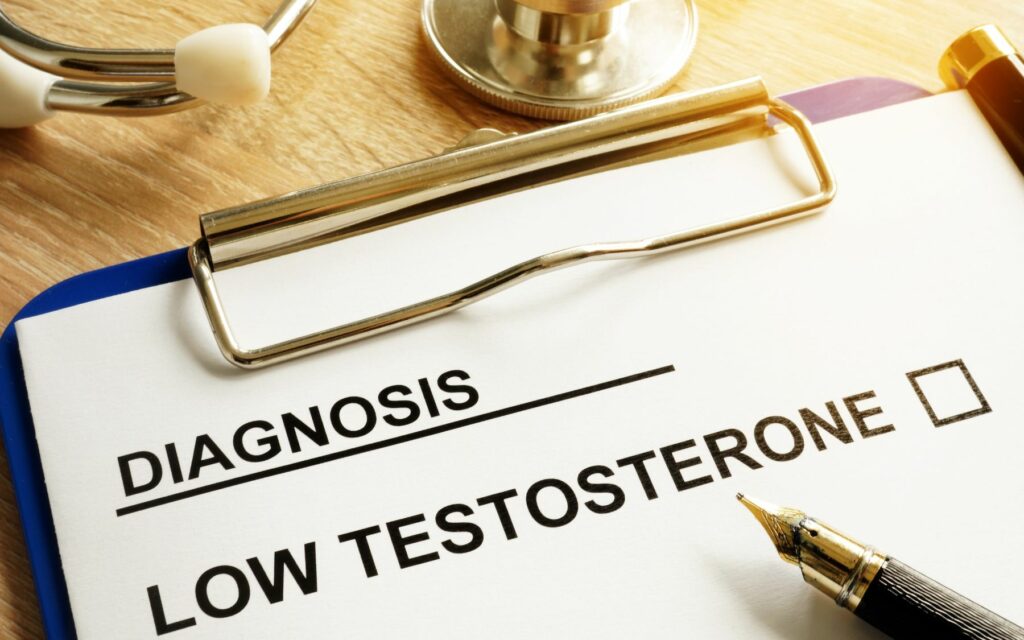
Peyronie’s is a disease where scar tissue in your penis causes it to bend, curve or lose length or girth. You might be able to feel the scar tissue (plaque formation) through the skin or you may have pain in a specific part of your penis as the scar tissue forms. During an erection, your penis can bend up, down, or to the side depending on the location of the scar. Some men with this condition don’t have a curve, but might have an area of indentation or “hourglass” appearance.
Most men don’t have perfectly straight erections. Just because there is a little curve in your penis, that doesn’t mean you have Peyronie’s disease. Men who have had a curvature their whole lives do not have Peyronie’s disease.
In most cases, the scar forms on the top of the penis, causing it to curve upwards when it becomes erect. Your penis will bend downward if the scar is on the bottom, and sideways if the scar is on the side. In some cases, the scar develops on both the top and bottom of the shaft, which can cause the penis to become “dented” or shorter. Sometimes the scar will go all the way around the penis, making it narrow like the neck of a bottle or the center of an hourglass. About one in three men with this condition may have calcium in the scar tissue that can make it feel like bone.
What are the stages of Peyronie’s Disease?
Peyronie’s disease has two stages: acute and chronic.
- Acute phase: This stage lasts between six and 12 months. During this period the scar forms under the skin of your penis, causing a curvature or other change in its shape. You may feel pain when your penis is erect or when it is soft.
- Chronic phase: The scar has stopped growing in this phase, so the curvature in the penis doesn’t get worse. The pain will usually be gone by this time, but sometimes it can continue, especially with erections. Also, erectile dysfunction (ED) or problems getting or keeping the penis hard may develop.
What treatments are available for Peyronie’s Disease?
Sadly there is no cure for Peyronie’s disease, but it is treatable and it can go away on its own. Although it may be tempting to request medication right away, many doctors prefer the “watchful waiting” approach to check if your symptoms. Here are some treatments available:
Medication
Your doctor may recommend medications — often drugs injected into the penis — or even surgery if you’re experiencing more pain or penis curvature over time.
Only one medication, clostridium hystolyticum (Xiaflex), is approved by the Food and Drug Administration (FDA) to treat the condition. It’s approved for use in people whose penis curves more than 30 degrees during erection.
The treatment involves a series of penile injections that break down the buildup of collagen.
Two other types of medicines that may be prescribed are:
- Injectable verapamil, which is usually used to treat high blood pressure
- Interferon injections, which helps break down fibrous tissue
Nonsurgical options
Non-drug treatments, such as:
- Shockwave therapy to break up scar tissue
- Penile traction therapy to stretch the penis
- Vacuum devices
Lifestyle changes
Lifestyle changes may reduce the risk of Erectile Dysfunction related to Peyronie’s disease. These include:
- Reducing alcohol consumption
- Quitting smoking
- Stopping drug misuse
- Exercising regularly
Surgery
Surgery is, as always, the last course of action in the case of severe penis deformity. Surgical solutions include:
- Shortening the unaffected side
- Lengthening the scar tissue side
- Penile implants
Lengthening runs a greater risk of erectile dysfunction. Shortening the unaffected side is used when curvature is less severe.
One type of shortening is a procedure called the Nesbit procedure. In this procedure, doctors remove or cinch excess tissue on the longer side. This creates a straighter, shorter penis.
If you wish to see our specialists Peyronie’s disease, please contact us to organise a consultation. You can also find out more here.



